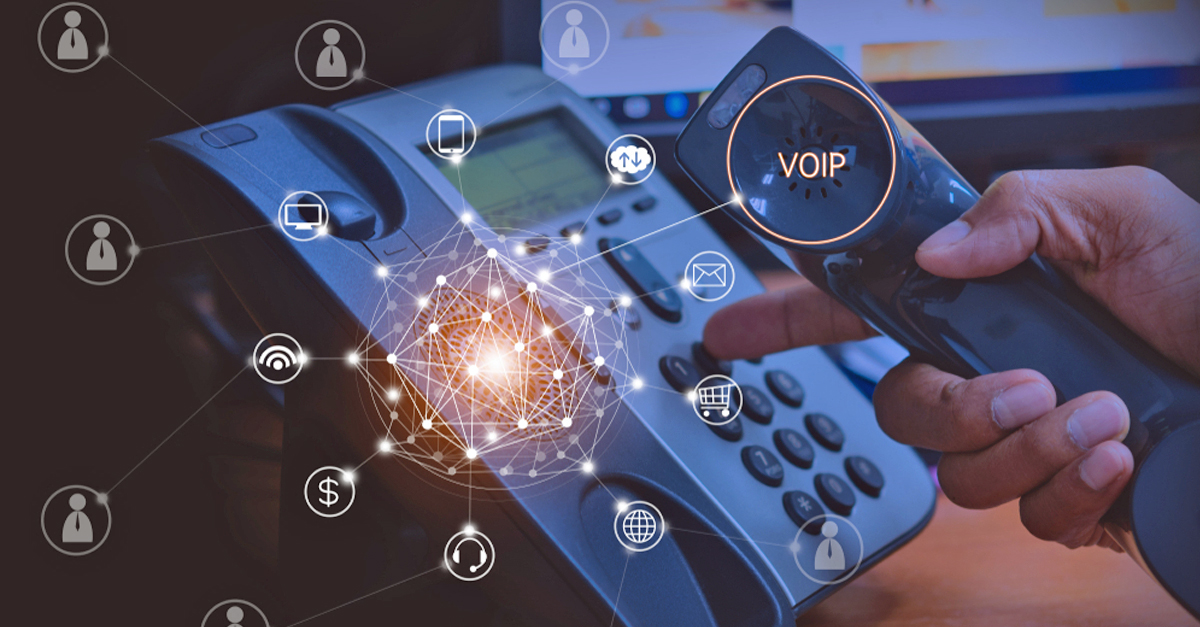Many administrators resist implementing VoIP over Wi-Fi, often citing security and quality concerns. The truth is that if implemented correctly, voice can be safely and reliably deployed on a wireless network. This article examines some best practices for optimizing voice over Wi-Fi (VoWi-Fi).
TeleDynamics Think Tank
Topics: VoWi-Fi, QoS, Wireless, Network Security, Network Design, Wi-Fi, Unified Communications
How to optimize your WAN connectivity for VoIP
The choice of WAN technology and how it is deployed have a huge impact on the reliability and quality of voice services. For this reason, precautions must be taken to optimize WAN services for voice. In this article, we review best practices for achieving this.
Topics: VoIP, Network Design, SD-WAN, Unified Communications, WAN Technology
Key considerations for choosing a high-grade WAN technology
For those familiar with commercial-grade WAN technologies, connecting the internal network to the outside world may seem straightforward. However, large enterprises with thousands of employees and internal services whose existence depends on connectivity require more advanced WAN technologies, which can be far from simple. In this article, we’ll take a look at some of the most common high-grade WAN technologies and the characteristics of each, to help you decide which is right for you.
Topics: Network Design, SD-WAN, WAN Technology
Network design strategies for optimal Wi-Fi performance
Whether you’re preparing to deploy a new wireless network or upgrade an existing one, understanding wireless network design and deployment strategies is essential. In this article, we describe some strategies and best practices for getting the most out of your Wi-Fi network.
Topics: Network Design, Wi-Fi
Know your stuff: Commercial-grade WAN technologies
An enterprise network is not truly functional unless it is connected to the internet. The types of technologies that can be used for network edge connectivity can broadly be separated into two groups: commercial-grade and high-grade WAN connection technologies.
The distinction between the two has to do with available speeds, reliability, services, and cost. High-grade WAN connectivity technologies include Metro Ethernet and MPLS, while commercial-grade options include cable and xDSL.
In this article, we examine the commercial-grade WAN technologies (cable and xDSL), how they function, and their most typical implementation scenarios.
Topics: Network Design, SD-WAN, WAN Technology
The sky’s the limit with Snom’s M700 DECT base station
Product Review
The Snom M700 DECT base station is ideal for companies requiring wireless coverage across multiple floors or throughout large buildings. Extensible to more than 250 base stations per installation and up to 1,000 connected handsets, this wireless telephony solution can serve organizations of literally all sizes. Its powerful DECT signal can traverse floors and walls, so the sky is literally the limit on how high the system can go! We review the Snom M700 base station, the Snom M5 repeaters, and the compatible cordless handsets (M85, M65 and M25) in this article.
Topics: Mobility (including remote work), Cordless, DECT, Network Design, Product Review, Customer Success Story, VTech, Snom
Knowledge is power! That’s why at TeleDynamics, not only do we offer exceptional products and white-glove customer service, but we also share principles pertaining to telecommunications technology with you to help equip you to offer the highest-quality service possible to your customers. In this article we explain the fundamentals of Wi-Fi, so you can have an in-depth understanding of the different deployment scenarios and options.
Topics: Wireless, Network Design, Wi-Fi, IoT, Regulations
How to troubleshoot VoIP problems caused by your firewall
A firewall is a vital component of any enterprise network. But, it can also wreak havoc on the operation of VoIP implementations. In this article, we address the most common problems a firewall can introduce to an IP telephony network, as well as best practices for avoiding or remedying them.
Topics: VoIP, Network Security, Troubleshooting, Network Design, Firewall
VoIP protocols: H.323 and MGCP as alternatives to SIP
Part 2 of 2
When it comes to VoIP signaling, SIP is by far the most widely-used protocol. But, there are other protocols, as well, and being familiar with them is helpful when establishing interoperability between systems or deploying specialized installations. In this article, we’ll discuss the H.323 protocol suite and the media gateway control protocol (MGCP), and look at applications for which they are best suited.
Topics: VoIP, Network Design, Gateway, Protocols & codecs
Quality of service must-haves for converged networks
IP Telephony features are not always “plug-and-play.” Rather, they must be configured to function properly. This is equally true when dealing with quality of service (QoS) on a network that transmits both data and voice (i.e., a converged network).
Companies commonly find that when they install their VoIP system on a preexisting data network, it works great at first. Days or weeks later, however, users complain of poor voice quality and intermittent disconnections. The network has not changed, so what’s going on?
In this article, we’ll see why QoS is a fundamental part of your network design for voice, and examine five configurations that should always be employed to achieve high-quality voice on a converged network.
Topics: QoS, VoIP, Routers, Network Design, Switches
Welcome to our Think Tank
In this blog you'll read our thoughts on business telephone systems. While a lot has changed in telecom since TeleDynamics was founded in 1981, we remain as committed as ever to delivering the best customer service in the industry.
If you would like elaboration on a specific topic, please let us know in the comments section.
Happy reading and thanks for stopping by!
Receive New Articles by Email

Recent Posts
Posts by Topic
- 5G
- AI
- Android
- Avaya
- Bluetooth
- Boom Collaboration
- Business Continuity
- Business Strategy
- Business Telephone System
- Case Study
- Catalog
- Cisco
- Cloud
- Collaboration
- Communication
- Conferencing
- Cordless
- CPaaS
- Customer Service
- Customer Success Story
- CyberData
- DECT
- E911
- Events
- Facility Management
- Firewall
- Firmware Upgrades
- FoIP
- Gateway
- Grandstream
- Headsets
- Home Security
- IoT
- IP PBX
- Jabra
- Konftel
- Leasing
- Microsoft
- Mobile
- Mobility (including remote work)
- NEC
- Network Design
- Network Infrastructure
- Network Security
- News
- OTT VOIP
- Outsourcing
- Panasonic
- Peripherals
- PoE
- Polycom
- Power Management
- Product Review
- Productivity
- Protocols & codecs
- QoS
- Regulations
- Routers
- SD-WAN
- SIP
- SIP Phones
- Snom
- Software Integration
- Surveillance
- Switches
- Total Voice Solution
- TP-Link
- Trends
- Troubleshooting
- UCaaS
- Unified Communications
- Videoconferencing
- VLAN
- Voicemail
- VoIP
- VoWi-Fi
- VTech
- WAN Technology
- Wi-Fi
- Wireless
- WISP
- Yealink
- Yeastar
- Zoom
















